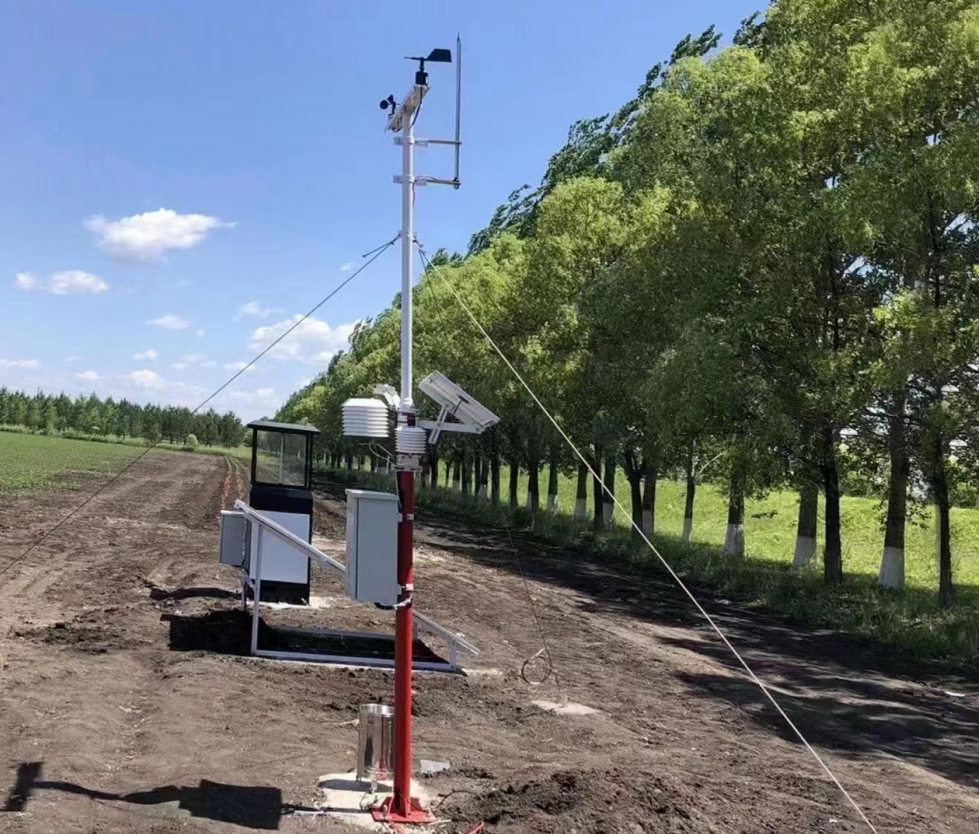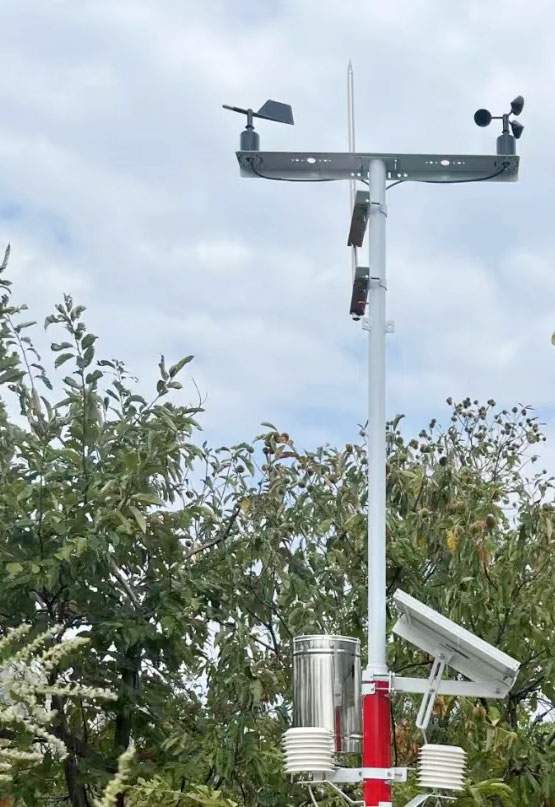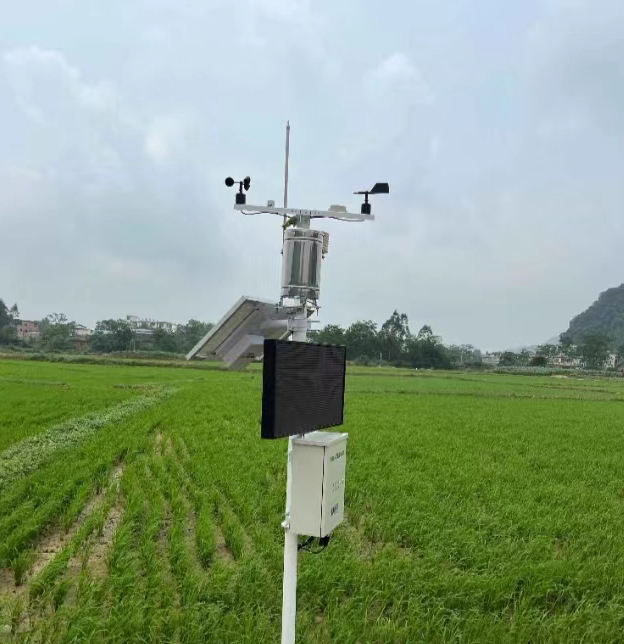

— Blogs —
—Products—
 Consumer hotline +8618073152920
Consumer hotline +8618073152920 WhatsApp:+8615367865107
Address:Room 102, District D, Houhu Industrial Park, Yuelu District, Changsha City, Hunan Province, China
Product knowledge
Time:2025-11-17 08:49:42 Popularity:9
The core of an agricultural compact weather station lies in its various weather sensors. Different crops and regions have varying requirements for weather elements, directly impacting the price:
- Basic Monitoring Elements: Temperature, humidity, rainfall, wind speed, wind direction
- Optional Monitoring Elements: Soil moisture, solar radiation, atmospheric pressure, light intensity
- Price Impact: Adding each sensor increases costs, with high-precision sensors costing more than standard models
For example, a basic five-element weather station may range from 10,000–20,000 RMB, while adding soil moisture, radiation, and light monitoring modules can raise the price to 20,000–30,000 RMB.
Agricultural Compact Weather Station Price Calculation Formula:
Total Price = Sensor Unit Price × Quantity + Data Logger + Transmission Costs + Power Supply Solution Costs + Installation Fees + Cloud Platform Usage Fees

The weather station transmits sensor data to a management platform, with transmission methods affecting the price:
- Wired Transmission: Reliable and suitable for fixed farmlands, but wiring is complex and costs are relatively low
- Wireless Transmission (LoRa, 4G/5G): Flexible and convenient for large-scale farmlands, slightly higher price
- Data Logger Performance: Collection accuracy, storage capacity, and processing power also influence equipment costs
- Mains Power: Suitable for farmlands with stable electricity, relatively inexpensive
- Solar Power: Ideal for remote farmlands or greenhouses, no wiring needed, but adds costs for batteries and solar panels
Choosing reputable manufacturers like NiuBoL ensures equipment quality, data accuracy, and long-term stability.
Low-quality products may be cheaper initially but can lead to monitoring errors and increased maintenance costs, outweighing the savings.
- Sensor lifespan: Generally 3–5 years
- Annual maintenance: Approximately 10% of total cost
- Long-term ROI exceeds initial investment

An automatic weather station is a compact site capable of autonomously measuring environmental climate data. It collects data via sensors and feeds it back to a management platform for intelligent agricultural management.
- Field Detection Station: Monitors temperature, humidity, wind speed, wind direction, light, rainfall, etc.
- Software Management System: Real-time data display, trend analysis, and warning report generation
- Real-Time Weather Monitoring: Stay informed of farmland climate changes
- Automatic Data Processing: Auto-alerts for abnormal weather based on preset thresholds
- Agricultural Management Decisions: Adjust irrigation, fertilization, and greenhouse environment control
- Rice Planting: Before heavy rain, the station detects excessive rainfall and prompts timely drainage measures
- Herbal Greenhouse Planting: Real-time monitoring of light, temperature, and humidity, combined with supplemental lighting and fans to regulate the environment, improving herb quality and value
- View weather data via cloud platform or mobile APP
- Supports historical data analysis, trend forecasting, and intelligent warnings
- Enhances farmland management efficiency with remote monitoring and precise control

- Avoid obstructions and buildings
- Wind speed and direction sensors should be installed on a mast at least 10 meters high
- Rainfall sensor must be level to prevent water accumulation and blockages
- Secure base with good grounding
- Standardized power wiring, lightning-proof, and moisture-proof
- Firmly install each sensor in the correct position
- Regularly clean dust and spider webs from sensors
- Check power system, wiring, and sensor status
- Promptly troubleshoot data anomalies and contact the manufacturer if needed
- Periodically calibrate temperature, humidity, wind speed, rainfall, and other sensors
- Ensures long-term monitoring accuracy and data reliability
Depending on sensor quantity, accuracy, transmission method, and power supply, prices generally range from 10,000–30,000 RMB.
Select essential sensors based on crop growth needs; for example, rice requires focus on rainfall and temperature/humidity, while low-light crops need added light monitoring.
Use wired for small-range farmlands; opt for wireless (LoRa/4G/5G) for large areas or remote management.
Recommended by the manufacturer or professionals to ensure stable mast, accurate sensor calibration, lightning protection, and moisture-proof safety.

Use mains power for farmlands with stable electricity; choose solar for remote farmlands or greenhouses.
Yes, through IoT technology, data is uploaded in real-time to cloud platforms or mobile APPs, supporting historical analysis and trend prediction.
Yes, clean dust and spider webs regularly and calibrate every six months to maintain accuracy.
Check sensor installation, power supply, and wiring; contact the manufacturer for maintenance or replacement if necessary.
Yes, through real-time weather data and scientific management, they effectively reduce natural disaster losses and improve crop yield and quality.
Open-field planting, greenhouse/shed planting, orchards, herbal planting, ecological agriculture experiments, and various other scenarios.
The agricultural compact weather station is a vital tool in modern smart agriculture, providing real-time monitoring of wind speed, wind direction, rainfall, temperature, humidity, light, and other weather elements to offer scientific data references for crop growth. Pricing is influenced by sensor configuration, transmission methods, power solutions, and brand; focus on quality and after-sales service when purchasing.
The NiuBoL Agricultural Compact Weather Station delivers high-precision sensors, stable data collection, and an intelligent management platform for remote monitoring, automatic warnings, and agricultural decision support. Through scientific selection, standardized installation, and regular maintenance, it enhances crop yields, optimizes planting management, and achieves sustainable development in smart agriculture.
Prev:NiuBoL Agricultural Weather Station — Comprehensive Smart Agriculture Solution
Next:Agricultural IoT — The Core Driving Force of Smart Agriculture
Related recommendations
Sensors & Weather Stations Catalog
Agriculture Sensors and Weather Stations Catalog-NiuBoL.pdf
Weather Stations Catalog-NiuBoL.pdf
Related products
 Combined air temperature and relative humidity sensor
Combined air temperature and relative humidity sensor Soil Moisture Temperature sensor for irrigation
Soil Moisture Temperature sensor for irrigation Soil pH sensor RS485 soil Testing instrument soil ph meter for agriculture
Soil pH sensor RS485 soil Testing instrument soil ph meter for agriculture Wind Speed sensor Output Modbus/RS485/Analog/0-5V/4-20mA
Wind Speed sensor Output Modbus/RS485/Analog/0-5V/4-20mA Tipping bucket rain gauge for weather monitoring auto rainfall sensor RS485/Outdoor/stainless steel
Tipping bucket rain gauge for weather monitoring auto rainfall sensor RS485/Outdoor/stainless steel Pyranometer Solar Radiation Sensor 4-20mA/RS485
Pyranometer Solar Radiation Sensor 4-20mA/RS485
Screenshot, WhatsApp to identify the QR code
WhatsApp number:+8615367865107
(Click on WhatsApp to copy and add friends)
